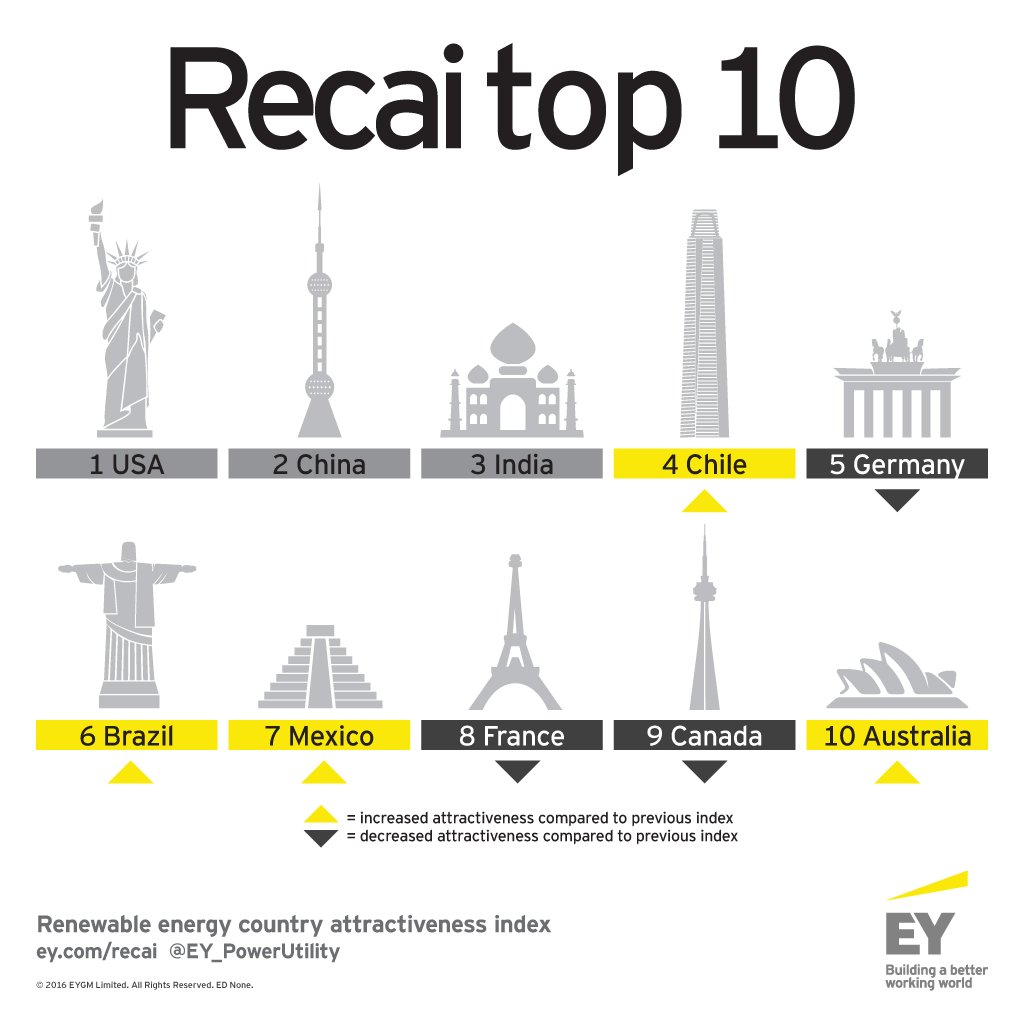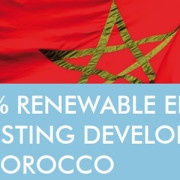Renewable energy investments shift to developing markets, says EY’s report
Almost without exception, European markets slipped down EY’s Renewable energy country attractiveness index (RECAI) rankings while less mature markets across Latin America, Africa and Asia continued their ascent, reveals the latest edition of the report.
So-called “emerging” markets now represent half of the countries in the 40-strong index, including four African markets featuring in the top 30. Just a decade ago only China and India were attractive enough to compete with more developed markets for renewable energy investment.
Chile (4), Brazil (6) and Mexico (7) climbed higher in the index top 10, while Germany (5) and France (8) fell in the latest ranking.

Ben Warren, EY’s Global Power & Utilities Corporate Finance Leader and RECAI Chief Editor, says:
“Emerging markets are transforming their energy industries at an unprecedented pace. Last year, renewable energy investments in the developing world overtook those in the developed world for the first time. Latin America, in particular, has become something of a litmus test for how quickly markets can grow.”
Chile is one of the first markets to enable economically viable renewables projects to compete directly with all other energy sources. At the same time, Brazil’s renewables sector is showing surprising resilience amid an economic downturn and its underdeveloped solar market remains a potentially lucrative lure. And Mexico’s recent power auctions have opened the door to multi-billion dollar opportunities under a new liberalized energy market.
Meanwhile, European markets appear to be scaling back their ambitions as they address the challenges of marrying up increasingly mainstream renewables with a legacy of centralized conventional power generation.
The US (1), China (2) and India (3) held their positions at the top of the index with the size and scale of renewables activity surpassing other countries. Notwithstanding uncertainty over its Clean Power Plan, the US held its position following the five-year extension of federal tax credits for wind and solar. This provided critical certainty for investors and is forecast to galvanize significant capacity deployment through to 2020 the report finds.
Argentina was the highest-scoring new entrant. The transformation of the country’s economy and rollout of an ambitious renewables program under its new pro-market government brings it into the index in 18th position, and reinforces how quickly new markets can redirect the focus of developers and investors.
Warren says:
“Markets earlier in their renewables journey are benefiting from cheaper and more efficient technologies, lower cost of capital and more reliable resource forecasting. The increasingly global flow of capital proves that investors are becoming more comfortable with new markets. We can expect to see massive deployment of low carbon investment in developing markets.
“Yet, ambitious targets and low pricing alone will not be enough to promise investment attractiveness. The ability of markets to climb, or stay in will depend on projects being built, and commercial viability enabling the supply of affordable energy in a competitive environment.”
EY’s Renewable energy country attractiveness index (RECAI) at a glance
For more information visit EY’s website.
Source: Press Release by EY. Image Credit: EY.









